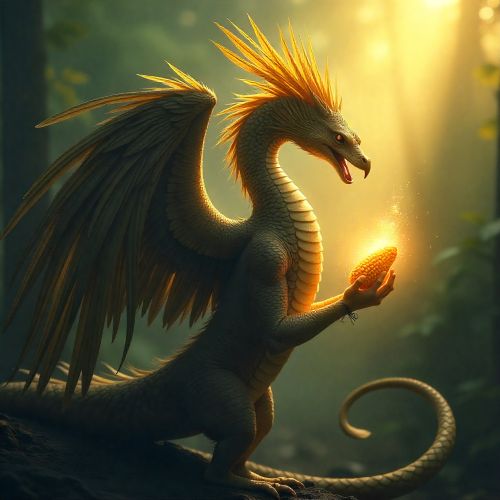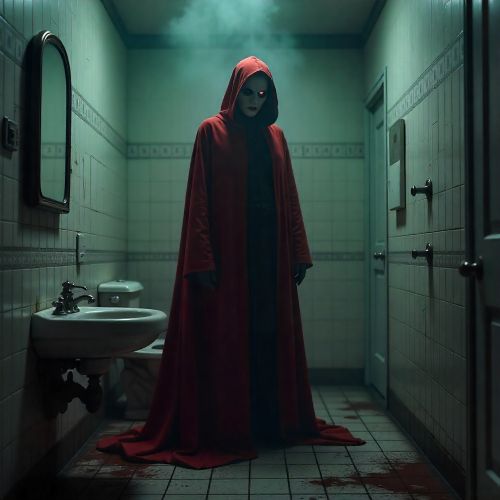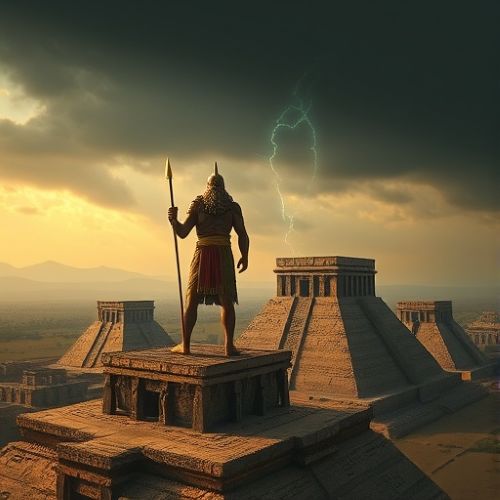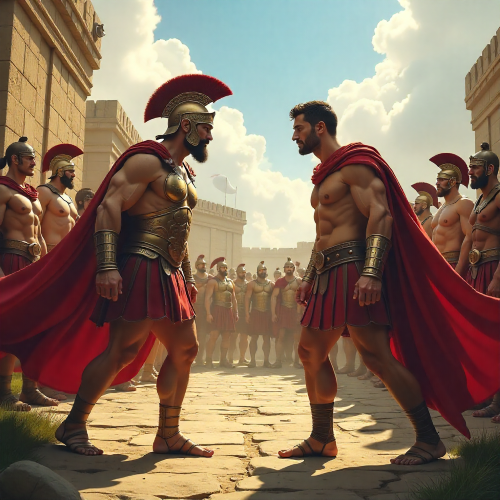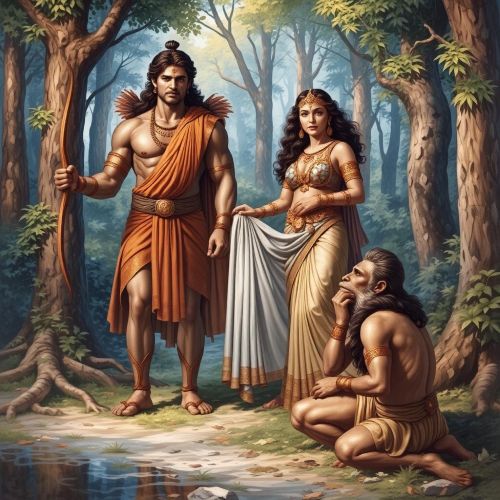Popol Vuh : The Maya Epic of Creation, Heroes, and Ancestral Memory
Listen
At a glance
| Attribute | Description |
|---|---|
| Mythology | Mayan Mythology |
| Language Written | Classical K’iche’ |
| Age | 16th century transcription of oral traditions |
| Author | Anonymous K’iche’ Maya scribes; preserved by Fray Francisco Ximénez |
| Main Characters | Hunahpu, Xbalanque, Heart of Sky, Seven Macaw, Lords of Xibalba |
Popol Vuh
Introduction
The Popol Vuh is the most important surviving text of the K’iche’ Maya, a sacred narrative that preserves their cosmology, ancestral memory, and cultural identity. Often translated as the “Book of the Counsel” or “Book of the Community,” it acts as both mythic scripture and historical chronicle. Far more than a story of creation, the Popol Vuh reflects how the K’iche’ understood their origins, their relationship with divine forces, and the responsibilities of their rulers. Like the Mahabharata or the Enuma Elish, it stands as a cultural epic that survived conquest, suppression, and centuries of silence to remain a symbol of Maya resilience.
Historical Background
Although its stories reach deep into pre-Columbian antiquity, the written Popol Vuh emerged in the 16th century, shortly after Spanish conquest disrupted K’iche’ political and cultural life. Maya scribes—fearing the loss of their oral traditions—recorded the text in Classical K’iche’ using the Latin alphabet introduced by missionaries. This early manuscript later came into the hands of Dominican friar Francisco Ximénez in the early 1700s. Ximénez copied the K’iche’ text and created a parallel Spanish translation, ensuring its preservation at a time when most indigenous books had been destroyed.
His version is the foundation for all modern translations, including influential works by Dennis Tedlock, Allen J. Christenson, and Adrián Recinos, each of whom helped bridge ancient Maya cosmology with contemporary scholarship. The Popol Vuh remains one of the very few surviving Mesoamerican mythological texts and is therefore crucial to understanding Maya civilization.
Synopsis & Themes
The Popol Vuh unfolds through a grand and interconnected narrative that moves seamlessly from the birth of the cosmos to the adventures of divine heroes and, ultimately, to the establishment of K’iche’ dynasties. Its storytelling spans realms of gods, humans, and ancestors, creating a layered vision of the Maya universe that combines spirituality, myth, and political memory.
The opening scenes describe a world shrouded in silence and darkness, long before humans or animals existed. In this vast emptiness, the creator gods—Heart of Sky, the Sovereign Plumed Serpent, and their divine allies—gather to shape the contours of the earth. Mountains rise, seas form, and the first animals appear as the gods bring structure to chaos. Their early attempts to create humans, however, fail repeatedly. Figures fashioned from mud fall apart, while beings carved from wood can walk and speak but lack memory, soul, and gratitude. Only when the gods form humans from maize dough do they finally succeed, producing beings capable of thought, worship, and meaningful connection with the divine. This moment establishes maize not just as a staple food but as the spiritual essence of humanity.
The narrative then shifts to the legendary exploits of the Hero Twins, Hunahpu and Xbalanque, whose father and uncle were destroyed by the lords of Xibalba, the fearsome Maya underworld. Determined to avenge their ancestors, the Twins journey into this perilous realm, facing deceptive trials and traps set by gods of death and disease. Through wit, transformation, and self-sacrifice, they overturn the power of Xibalba’s rulers. Their eventual triumph restores cosmic balance, and their transformation into celestial bodies—one becoming the sun and the other associated with the moon—embodies the enduring cycle of life, death, and renewal that shapes Maya philosophy.
The final section of the text turns toward the early history of the K’iche’ people themselves. It recounts the migrations of their ancestors, the formation of alliances, and the rise of noble houses that traced their origins back to divine and heroic beings. By linking political authority to sacred ancestry, the Popol Vuh reinforces the legitimacy of K’iche’ rulers and embeds their leadership within the cosmic order.
Across these narratives, several recurring themes emerge. The sacred nature of maize as the foundation of human life reflects deep agricultural reverence. The cyclical interplay between creation and destruction emphasizes the Maya belief in balance and renewal. Acts of heroism, especially those grounded in intelligence and sacrifice, highlight the moral values encoded in the myth. The emphasis on lineage and authority speaks to the integration of mythic origins with political identity. Underlying all of these is the idea that divine intention, natural forces, and human actions are deeply intertwined, forming a continuous system where gods, people, and the cosmos coexist in mutual dependence. These themes, woven throughout the Popol Vuh’s stories, reveal a worldview that is holistic and profoundly interconnected—one where nature, spirit, and society are inseparable parts of the same living universe.
Key Characters
The narrative of the Popol Vuh introduces numerous divine figures, heroes, and ancestral beings whose roles shape the mythic universe. Heart of Sky (Huracán) is a central creator deity associated with thunder, lightning, and cosmic power. He directs the formation of the earth and participates in efforts to create humanity.
Sovereign Plumed Serpent (Gucumatz) collaborates in creation, representing wisdom, wind, and the dynamic forces that shape life. The elder divine couple Xpiyacoc and Xmucane act as advisors and daykeepers, guiding the creation of human beings and supporting the Hero Twins through ancestral influence.
The Hero Twins—Hunahpu and Xbalanque—are the epic’s most iconic characters. Their journey to Xibalba, mastery of trials, and ultimate transformation embody the Maya understanding of resilience, sacrifice, and cosmic renewal. Other significant figures include Seven Macaw, a prideful being whose defeat restores cosmic order; Hun Hunahpu and Vucub Hunahpu, the father and uncle of the Twins; and the Four First Men, created from maize and destined to become ancestors of the K’iche’ lineages. Together, these characters articulate the Maya vision of how divine forces shape both mythic and mortal realms.
Cultural & Religious Significance
The Popol Vuh is both scripture and cultural memory. Its creation stories reflect the Maya understanding of the natural world, particularly the centrality of maize, which is viewed not only as food but as the essence of human existence. The Hero Twins’ journey mirrors shamanic practices, seasonal cycles, and cosmic rhythms.
The genealogical and historical sections reveal how mythology reinforced political structure. By linking rulers to divine ancestors, the text validated authority while teaching the responsibilities of leadership. These narratives also preserve the ethical ideals of the Maya: humility before the gods, respect for the natural world, and maintaining harmony between the earthly and the divine.
Today, the Popol Vuh remains a touchstone of Maya identity. It is celebrated in cultural festivals, referenced in ritual practices, and taught in schools and community programs across Guatemala. Its endurance is a testament to indigenous resilience and the ongoing power of ancestral storytelling.
Modern Adaptations
In recent decades, the Popol Vuh has become widely recognized beyond academic circles. Artists, writers, filmmakers, and educators reinterpret the myth for contemporary audiences while maintaining its cultural essence.
Translations by Tedlock and Christenson have brought linguistic depth and cultural context, allowing global readers to appreciate the nuances of Maya cosmology. Visual artists have produced murals, illustrations, and animations inspired by the Hero Twins and the creation narratives. Theater and dance groups across Latin America adapt the epic for performance, blending traditional elements with modern staging.
Digital media has further expanded its reach—interactive websites, graphic novels, and educational platforms make the Popol Vuh accessible to new generations. Through these adaptations, the text continues to shape conversations about indigenous identity, heritage, and the enduring wisdom of ancient cultures.
Source
Christenson, A. (n.d.). Popol Vuh: The mystical sections tales of first beginnings from the ancient Kiche Maya. BYU Studies. https://byustudies.byu.edu/article/popol-vuh-the-mystic-sections-tales-of-first-beginnings-from-the-ancient-kiche-maya
Hudson Museum. (2025, June 26). Popol Vuh. University of Maine. https://umaine.edu/hudsonmuseum/maya/ballgame/
Mythnest. (2025, May 10). The Mayan creation myth of the Popol Vuh. https://mythnest.com/the-mayan-creation-myth-of-the-popol-vuh/
Sharer, R. J. (2014, March 20). Popol Vuh. World History Encyclopedia. https://www.worldhistory.org/Popol_Vuh/
Encyclopaedia Britannica. (1998, July 19). Popol Vuh. https://www.britannica.com/topic/Popol-Vuh
Wren, M. (n.d.). Mayan creation myth. University of Texas. https://www.laits.utexas.edu/doherty/plan2/wren.html
Wikipedia contributors. (2002, September 25). Popol Vuh. Wikipedia. https://en.wikipedia.org/wiki/Popol_Vuh
Latin American Studies. (n.d.). POPOL VUH [PDF]. https://www.latinamericanstudies.org/maya/Popol_Vuh.pdf
Frequently Asked Questions
What is the Popol Vuh and why is it important?
The Popol Vuh is the sacred narrative of the K’iche’ Maya that combines creation stories, heroic myths, and ancestral history. It is crucial because it preserves Maya cosmology and cultural identity after the Spanish conquest.
Who wrote the Popol Vuh?
The original authors were K’iche’ Maya scribes who recorded their oral traditions in the 16th century. Although they remain anonymous, their work was later preserved through a transcription by Francisco Ximénez.
What is the role of the Hero Twins in the Popol Vuh?
Hunahpu and Xbalanque defeat the lords of Xibalba and restore cosmic balance, symbolizing transformation, resilience, and the cycle of death and rebirth in Maya belief.
Why were humans made from maize in the Popol Vuh?
Maize is considered sacred in Maya culture, representing nourishment, life, and spiritual energy. Creating humans from maize reflects the deep connection between the Maya and their staple crop.
How is the Popol Vuh used in modern Maya culture?
It continues to influence rituals, festivals, educational programs, and artistic expression, serving as a living source of cultural identity and spiritual guidance for Maya communities.



